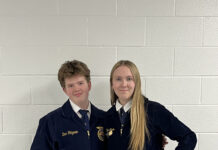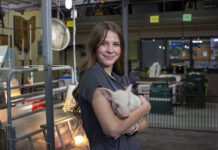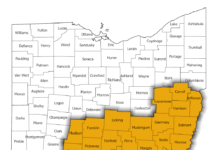COLUMBUS — Lawmakers in the Ohio House and Senate both introduced bills this past week to continue amending Ohio’s taxation formula for CAUV land, and to make the calculation more accurately reflect farming practices.
CAUV, or Current Agricultural Use Value, is a state program that allows eligible farmland to be taxed at its agricultural value, rather than its highest potential value. In 2014, some Ohio landowners began to doubt the accuracy of the state’s formula when they saw dramatic increases in their CAUV taxes, by as much as 200-300 percent.
The bills, known as H.B. 398 and S.B. 246, call for an amendment to the capitalization rate that would provide a more accurate agriculture value by excluding appreciation and equity buildup.
And both bills also seek to protect farmers who are investing in conservation practices, by stipulating that land used for conservation, enrolled in a federal land retirement or conservation program for at least three years, be valued at “the lowest of the values” assigned to soil types.
Why needed
Sen. Cliff Hite, R-Findlay, who introduced the Senate bill, said it would prevent conservation land from being taxed as though it was producing crops.
“These factors arbitrarily inflate the value of farmland based on market considerations and do not in any way account for how much income is achieved,” Hite said, in a released statement.
He said the changes would help farmers who are using specific conservation lands to implement water quality improvement.
The legislation was prompted by concerned farmers, and the Ohio Farm Bureau Federation, which has been working with lawmakers and state administrators following the triennial update in 2014.
Jack Fisher, Ohio Farm Bureau executive vice president, said the amendments will “improve the accuracy of the CAUV formula and mitigate the size of tax increases.”
Round two
This is the second round of CAUV recommendations. The Ohio Department of Taxation enacted the first round of changes in March, which will affect taxes paid in 2016, for counties going through a reassessment this year.
In the first round, changes were made to more closely tie tax values to current economic conditions in agriculture; include more recent data on crop mix, prices, yields and production costs; and better represent the true value of woodlands compared to cropland.
According to OFBF, the changes result in an average 15 percent reduction in cropland value from the tax department’s originally proposed 2015 values. This translates to an average annual savings of $10 an acre for cropland and $15 for woodland for those on the 2015 revaluation cycle.
Want more action
But farmers and more than two dozen lawmakers who helped sponsor the current bills, say they want more improvement.
“We have reached a point where every indication is the tax department won’t act using their administrative authority to fix CAUV,” said Brandon Kern, OFBF director of state policy, in a released statement.
“If that’s the case, our message to lawmakers is that they should take targeted legislative action to require changes be made to improve the accuracy of the formula.”
Brandon Ogden, legislative aide to Rep. Brian Hill, R-Zanesville, who introduced the House bill, said “the tax commissioner was not receptive to these particular requests,” and lawmakers felt their best option was legislation.
Ogden said the House bill has not yet been assigned to a committee, but he’s hoping it will end up in a committee that acts quickly, and understands what’s at stake for landowners.
“It’s kind of an urgent matter,” he said.
Related stories:
- CAUVs decrease, tax bills may not, May 29, 2015
- CAUV still not perfect: Farm Bureau offers new proposal to improve farmland tax, May 13, 2015
- Some progress at Ohio tax department CAUV meeting; still more questions, March 5, 2015
- Ohio tax advisory group to discuss CAUV changes March 5, Feb. 5, 2015
- Will Ohio have CAUV changes by 2016? Nov. 19, 2014
- Ohio CAUV tax rates: What goes up, must go up some more, Oct. 22, 2014
- Ohio Farm Bureau tackles CAUV concerns, Oct. 22, 2014
- Ashtabula meeting to discuss rising CAUV rates, Aug. 6, 2014
- Farmers see 2008 CAUV rates increase, Feb. 11, 2009










